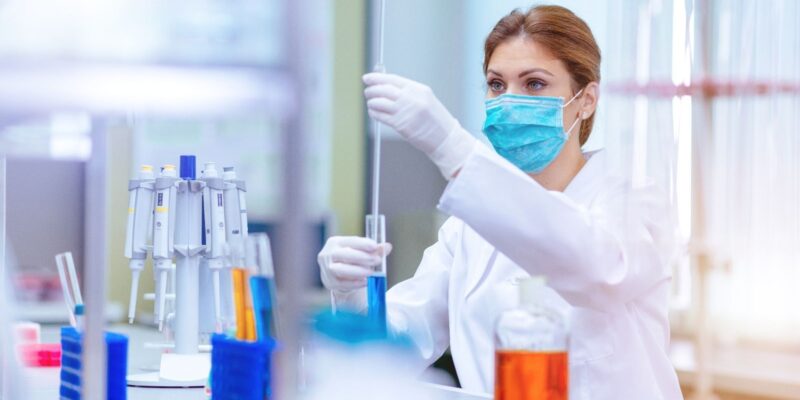Lab Design Starts Here: 770-932-1118
Your Guide to Inspections of Pharmaceutical Quality Control Laboratories

Quality control in Pharmaceutical Laboratories is crucial to keep up with the increase in research and production. Drug manufacturers must test materials, processes, equipment, techniques, environments, and personnel to ensure their final products are consistent, safe, effective, and predictable.
New and better medicinal agents, that is drugs, biological products, and medical devices are being produced at an accelerated rate and high-quality standards must be met to ensure public safety. COVID-19 vaccine production setbacks have highlighted the need to upgrade the global critical quality and manufacturing infrastructure to meet the scale and speed required to ensure these drugs can be made available to everyone around the globe in a timely and safe manner. According to the World Health Organization (WHO), the term quality control refers to the sum of all procedures undertaken to ensure the identity and purity of a particular pharmaceutical.
Quality Control in pharmaceutical laboratories is essential in the pharmaceutical industry to help companies minimize staff and management errors to produce and deliver quality products safely and consistently. Areas that QC can directly impact the quality in laboratories include management, sanitation, hygiene, building and facilities, equipment, personnel, complaints, documentation and recordkeeping, inspections, and quality audits.
Guidelines to prepare to ensure highest possible quality in the lab:
-
- Create procedures that follow overall company objectives and goals. Include QC activities, such as inspections, peer reviews, and software testing process. Invest in technology and software that tests the process and equipment regularly.
- Train staff and management to understand and act on how quality control and quality assurance personnel can monitor industry practices to stay “current” with industry standards and requirements.
- Review systems in place, policies, and instructions for people to follow consistently and adjust when necessary to stay current.
- Practice. Practice. Practice. Set up drills following processes. Using the who, what, when, where and how plan is most effective.
- Finally, become ISO certified to gain international credibility by ensuring that your products and services are safe and reliable using standards that can be applied to any organization.
The FDA conducts four different types of inspections: pre-approval inspection, routine inspection, compliance follow-up inspection, and “for cause” inspection. Each in their own unique way is intended to help protect the public from unsafe products. By pulling random samples for inspection, checking the product against specifications, verifying packaging requirements, classifying, and reporting quality defects, and conducting on-site testing each lab can gather enough data to assure the quality control. The following steps, in the format of a checklist, are common among most QC inspections.
Suggested Checklist:
✓ People are expected to follow all laboratory processes and regulations.
✓ Products must go through regular testing, comparison, and quality assurance before distributing to consumers.
✓ Processes should be properly documented, clear, consistent, and distributed to all employees. Regular evaluations should be conducted to ensure all employees are complying with the current processes of the organization.
✓ Procedures consist of a set of guidelines that complete a critical process or part of a process to achieve a consistent result. Any deviation from the standard procedure should be reported immediately and investigated.
✓ Premises should always be clean and maintained to avoid cross-contamination, accidents, or even fatalities. All equipment should be placed or stored properly and calibrated regularly to ensure they are fit for the purpose of producing consistent results to prevent the risk of equipment failure.
A company with a drug recall suffers enormous damage with loss of product sales, decreased customer confidence, damage to the brand and company name, and in many cases, legal proceedings. In many cases, such losses can be avoided by adhering to quality control guidelines.
To solve problems and make improvements the following 7 tools have a clear approach to maximizing success:
-
- flow charts depict the flow and sequence of a proces
- check sheet is a tool to collect, organize, and analyze data
- pareto charts is the analysis of data in search of the 80/20 rule or pareto principle that tells us what to focus on
- cause & effect diagrams explore what may be causing problems
- scatter diagrams show the possible relationship between two variables
- histograms are bar charts that show frequency of occurrence of continuous data
- control charts used at the end of a project show the process is in control or stable making sure the changes were effective
Quality control is an essential part of the laboratory routine. It is not only important for compliance with standards, but also reduces risk to both the manufacture and the end user. At LabDS we can help. We are available to discuss quality control guidelines or answer any questions addressing this topic. Our products, such as custom lab casework or lab cabinets or seating are suitable for pharmaceutical labs. As leaders in lab design for decades, LabDS understands how to deliver consistent, dependable, and durable performance.

